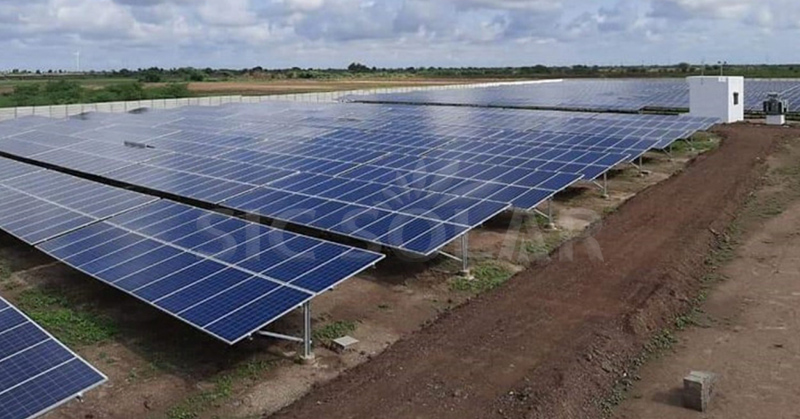Installing solar panels on the ground is a popular choice for residential, commercial, and utility-scale projects. Unlike rooftop systems, ground-mounted solar arrays offer flexibility in positioning, optimal tilt angles, and easier maintenance. As a leading manufacturer of solar mounting systems, SIC Solar combines cutting-edge engineering with practical solutions to ensure secure, efficient, and long-lasting installations.
1. Ground-Mounted Solar Panel Installation Methods
Ground-mounted systems rely on robust structural foundations tailored to terrain and environmental conditions. Below are the most common methods:
a. Concrete Foundations
For stable, non-rocky soil, concrete foundations are a traditional and reliable choice. A cement base is poured into excavated trenches, and mounting rails are bolted onto the cured concrete. This method suits large-scale installations where heavy loads and wind resistance are critical. SIC Solar precast concrete bases simplify installation while ensuring durability in harsh climates.
b. Ground Screw (Helical Pile) Systems
Ground screws are metal piles with helical blades twisted into the soil using specialized machinery. These screws provide excellent pull-out resistance and are ideal for soft or uneven terrain. SIC Solar hot-dip galvanized ground screws resist corrosion and offer a 25+ year lifespan, making them a sustainable choice for projects in regions with high moisture or salinity.
c. Driven Pile Systems
C- or H-shaped steel beams are driven into the ground using pile drivers. This method is fast and cost-effective for flat, obstruction-free sites. However, driven piles may lack the lateral stability required for areas with heavy snow or wind loads.
d. Ballasted Systems
For sites where drilling or excavation is impractical (e.g., protected landscapes), ballasted systems use weighted bases (e.g., concrete blocks) to hold panels in place. SIC Solar adjustable ballasted mounts are popular for temporary installations or rocky terrains.
2. Key Components of Ground-Mounted Systems
A successful installation depends on high-quality materials and precise engineering:
Mounting Rails: Aluminum or carbon steel rails secure panels to the foundation. SIC Solar anodized aluminum rails are lightweight, corrosion-resistant, and compatible with most panel brands.
Tilt Kits: Adjustable tilt brackets optimize panel angles (15°–45°) for seasonal sun exposure, boosting energy yield by up to 20%.
Clamps and Fasteners: Stainless steel mid-clamps and end-clamps hold panels firmly to rails, even in high winds.
3. Step-by-Step Installation Process
Site Assessment: Engineers evaluate soil type, slope, and shading. SIC Solar terrain analysis tools ensure optimal placement.
Foundation Installation: Depending on soil conditions, ground screws, driven piles, or concrete bases are installed.
Rail Assembly: Rails are mounted horizontally or vertically onto the foundation.
Panel Mounting: Panels are clamped to rails, with wiring routed through conduits beneath the array.
System Testing: Electrical connections, grounding, and tilt angles are verified for safety and efficiency.
4. Why Choose SIC Solar Ground-Mount Solutions?
Adaptability: SIC Solar systems accommodate flat, sloped, or uneven terrain, with clearance heights up to 4.3 meters for agricultural or snow-prone areas.
Sustainability: ZAM-coated steel components (zinc-aluminum-magnesium alloy) provide superior corrosion resistance, reducing environmental impact.
Cost Efficiency: Pre-assembled kits and modular designs cut labor costs by 30% compared to traditional methods.
A recent SIC Solar project in the UK showcased a 187.8 kW ground-mounted system using ZAM-coated rails and ground screws, achieving a 20% reduction in installation time while withstanding extreme weather conditions.
5. Maintenance and Longevity
Ground-mounted systems require minimal upkeep:
Regular Inspections: Check for loose bolts, corrosion, or vegetation encroachment.
Panel Cleaning: Easy access allows for periodic cleaning to maintain efficiency.
Warranty Assurance: SIC Solar 25-year warranty guarantees structural integrity, aligning with panel lifespans.

Ground-mounted solar installations offer unmatched flexibility and efficiency, but their success hinges on robust engineering and high-quality materials. With SIC Solar innovative mounting systems—from galvanized ground screws to tilt-adjustable rails—homeowners and businesses can harness solar energy reliably and sustainably. Whether for a rural farm, commercial facility, or utility-scale solar farm, SIC Solar provides the foundation for a brighter, greener future.